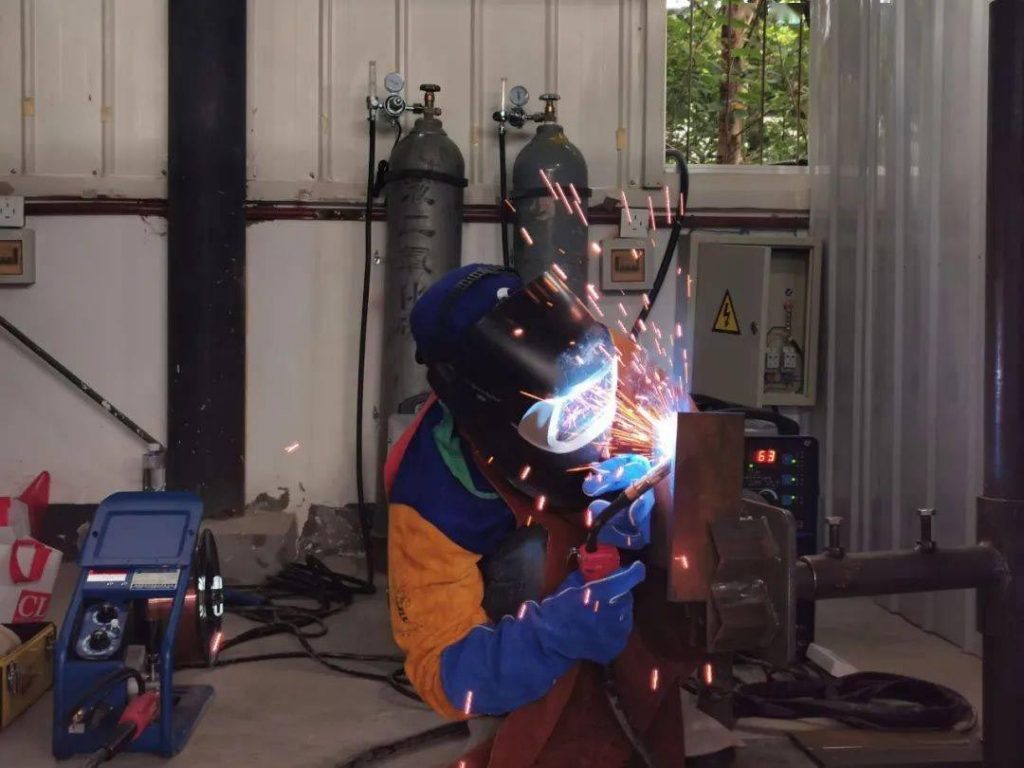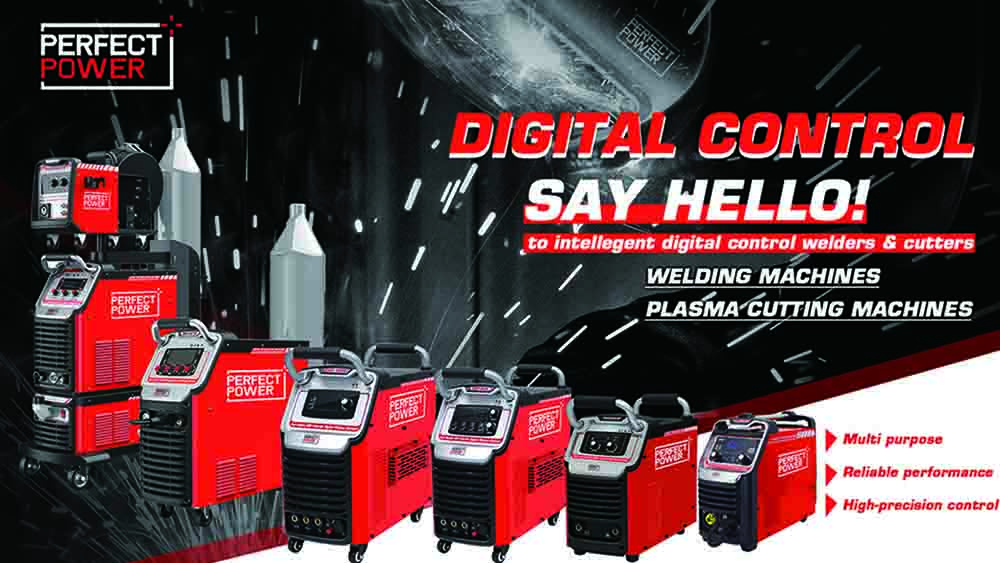Hobby farming is always filled with excitement. Whether it involves deciphering peculiar animal sounds at midnight or constantly battling against pests, there is no room for boredom in the realm of agriculture, irrespective of the scale of your operation. However, this thrill is not always desirable. Sometimes, it originates from damaged materials and equipment scattered around the farm, compelling you to employ innovative solutions to avoid costly repairs. This is where welding, one of the most valuable repair techniques in a farmer’s arsenal, comes into play.
Welding on the Farm or Ranch
Having a welder readily available on the farm, along with the necessary expertise to operate it safely, can make a significant impact. It enables the prompt resolution of issues ranging from simple fence and gate repairs to complex tasks like fixing tractors and farm machinery. This ability can save the need for purchasing expensive new equipment, as broken parts can be swiftly and effectively restored to their original functionality.
However, selecting the appropriate welder for your farm can be a complex task. It is not a straightforward process due to the wide range of welders available. Each welder is designed for specific repair jobs, and not every welder is suitable for every task. To simplify the selection process, consider the following welder specifications: welding process, current requirements, duty cycles, and amperage outputs.

Welding 101
stick welding, metal inert gas welding, and tungsten inert gas welding are the three primary types of welding processes. Each process has its own advantages and disadvantages. While there are other welding processes like flux-cored arc welding and plasma arc cutting, hobby farmers usually encounter these three main types more frequently.
Stick Welding
Stick welding, or arc welding, is widely recognized as a preferred technique for personal purposes because of its cost-effectiveness and the ease of carrying the necessary equipment. These welders generate an electric current, also referred to as an arc, by connecting the welding electrode, commonly known as a stick, with the base metal. This process results in the melting of the electrode and the formation of a weld. The names of the machinery and technique are derived from this characteristic.
Due to the continuous melting of the electrode, these welding machines need to have the stick changed frequently, which can make them somewhat challenging to operate. The skill of striking and sustaining an arc is crucial as moving the welder too far back after striking the electrode can cause the arc to break. Additionally, multiple electrodes may be necessary to achieve a successful weld, and it’s important to note that stick welders have a tendency to melt through base metals that are thinner than 1/8 inch.
Nevertheless, the advantages of stick welders are expected to surpass the disadvantages in the future. Undoubtedly, they are the most cost-effective welders available, and they can be utilized even in adverse weather conditions such as wind or rain. Additionally, they can be used on dirty or rusted metals, which is extremely advantageous for farmers and ranchers.
MIG welding
In contrast to stick welding, MIG welding operates on a semi-automatic basis. It involves the formation of an arc between an electrically charged wire spool and the base metal, resulting in the melting of the wire and the creation of a weld. The wire is automatically fed into the welding process at a predetermined speed, allowing for the production of longer and neater welds. Unlike stick welding, MIG welding does not require the re-establishment of the arc, making it much simpler to use. Additionally, MIG welders such as the MIG-230 MINI MIG Welder from Perfect Power Welder can effectively weld thinner metals.
However, MIG welders have a higher initial cost and are less portable compared to stick welders, which could limit their practicality on farms. Moreover, they are most effective on clean base metals, therefore requiring the removal of dirt, rust, and paint before operation.
Tig Welding
TIG welding is comparable to MIG welding but there are notable distinctions. Instead of employing a metal electrode, TIG welders utilize a non-consumable tungsten electrode to initiate and sustain the arc for welding. With the electrode not being consumed, filler metal becomes essential for welding purposes, and a shielding gas is necessary to safeguard the weld from external elements during the welding process. On the other hand, stick electrodes are coated with a metal coating that automatically generates this shielding gas when the electrode melts.
TIG welders come at a considerable cost and demand exceptional expertise to operate, considering they deliver the utmost accuracy and top-notch welds. Moreover, they produce the most visually appealing welds among the three main types, rendering them perfect for craftsmen in the metalworking industry who craft ornamental or functional items for exhibition.
Types Of Currents
In order to operate, all welders need a power source such as electricity or gas. However, they can vary in how they utilize and convert that power source into an electric current. As electric currents consist of negative and positive poles, there are three main types of currents that welders produce, each with their own advantages and disadvantages. Welders are clearly marked with their specific current type, and some models even indicate it in their name. Many welders available for purchase can easily switch between different currents with a simple switch.
Direct Current
The flowing of this electric current remains consistent in one direction, leading to a consistent electrical polarity. Direct current welding offers the advantage of easier arc initiation for welders, as well as a more stable arc throughout the welding process. Additionally, this type of current can be categorized based on the direction in which electrons flow.
- Straight Polarity: This current type, which can be more accurately referred to as electrode-negative polarity, is most effective on thinner metals, but it leads to faster burn-off of the electrode.
- Reverse Polarity:This current type, also known as electrode-positive polarity, is most suitable for thicker metals because it provides a deeper penetration into the base metal.
Alternating Current
As implied by its name, this current changes direction periodically, flowing in one direction for half of the time and in a different direction for the other half. Consequently, it may be slightly less predictable compared to a DC welder. However, its significant advantage lies in its ability to effectively weld metals that have been magnetized due to friction. As a result, alternating current welders, like the Perfect Power TIG-200 Arc Welder mentioned earlier, are more adaptable in various farm applications. This is particularly beneficial as metals, such as steel, used in farm equipment can become magnetized through frequent contact with hay, feed, or water.
Duty Cycle
When searching for a welder, it is important to consider the duty cycle. This refers to the amount of time that a welder can operate without overheating, expressed as a percentage of a 10-minute cycle. For example, a welder with a duty cycle of 50 percent can work for five minutes before needing a five-minute rest period to cool down. The duty cycle also varies depending on the amperage output of the welder. At higher amperages, the duty cycle might be 20 percent, whereas at lower amperage outputs it could be 100 percent. Most welders have adjustable amp outputs that change based on the thickness of the base metal being worked on. Thinner materials require lower amp outputs.
While browsing the market options, remember that buying a welder is not the only thing you’ll need to consider. You should also purchase safety gear such as a helmet, jacket, and gloves, as well as shielding gas and electrodes if necessary. If you have a limited budget or only occasional welding needs, you can think about renting a welder from a local equipment shop or welding manufacturer for repairs on your farm. This way, you can enjoy the convenience of welding at a lower cost overall. It is crucial to thoroughly read the manual of any equipment, whether purchased or rented, before operating it. Improper use can result in eye injuries and severe burns. Furthermore, before attempting to weld the actual material, it is advisable to practice on scrap metal. This will help you become familiar with the welding process and the controls of the welder.
In a short span of time, through research and practice, you can easily master gate repair and metalwork, adding excitement to your life in the most enjoyable way possible.

